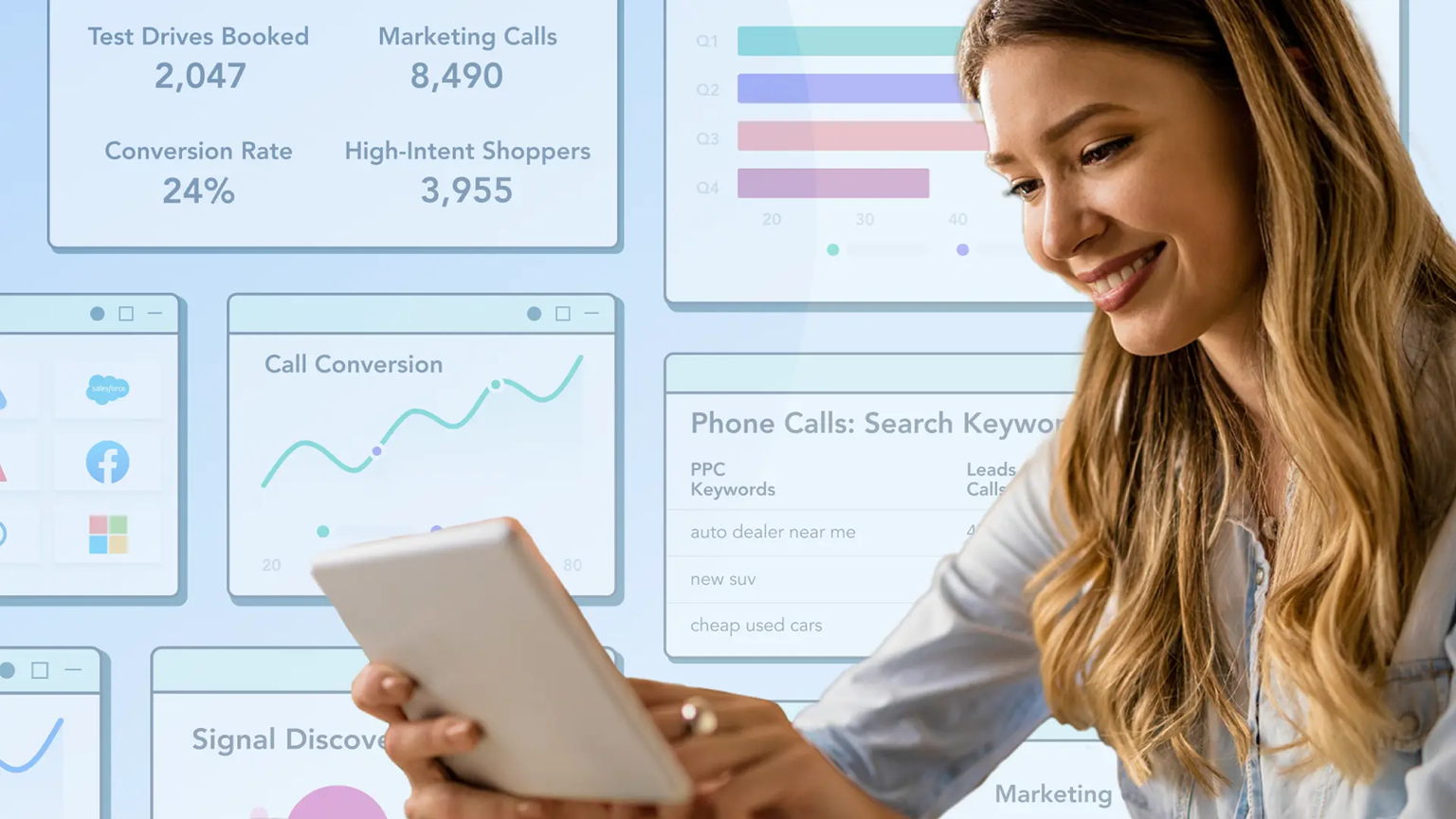In today’s digital age, data has become a crucial resource for businesses of all sizes. Understanding and leveraging data in marketing can drive significant improvements in your campaigns, enhance customer relationships, and ultimately increase revenue. Marketers who successfully use data not only gain a competitive advantage but also create personalized experiences that resonate with their audience.
Why data is essential for marketing
Data is the backbone of modern marketing strategies. Whether it’s customer behavior, preferences, or demographic details, data helps marketers make informed decisions, streamline processes, and optimize campaigns for better results. The more you understand about your customers and the way they interact with your brand, the more effectively you can tailor your marketing efforts to meet their needs.
Here are a few key reasons why leveraging data in marketing is so important:
- Informed decision making: Data removes guesswork from your marketing strategy. By analyzing historical data and trends, you can make decisions backed by concrete insights rather than intuition alone.
- Personalization: Consumers expect personalized experiences. Data allows marketers to segment audiences and deliver tailored content, offers, and ads that are more likely to engage the target audience.
- Performance optimization: With data, you can track the performance of marketing campaigns in real-time and adjust strategies accordingly to maximize results.
- Customer insights: Data provides a deeper understanding of your customers’ needs, preferences, behaviors, and pain points, enabling you to refine your product or service offerings.
- Cost efficiency: By focusing on what works and eliminating underperforming strategies, data-driven marketing ensures that you invest your marketing dollars wisely, improving ROI.
Now that we understand why data is essential, let’s look at how to gather, analyze, and leverage data in marketing to drive meaningful results.
1. Gathering data: the first step to data-driven marketing

The first step in leveraging data is collecting it from various sources. The key to effective data collection is ensuring it is accurate, relevant, and actionable. Below are the primary types of data you can gather for your marketing efforts:
Types of data:
- Demographic data: This includes basic information about your customers, such as age, gender, income level, location, and occupation.
- Behavioral data: Behavioral data focuses on how customers interact with your brand, including website visits, purchases, and social media engagement.
- Psychographic data: This data sheds light on your customers’ interests, lifestyles, values, and buying motivations.
- Transactional data: This includes data related to past transactions, such as purchase history, frequency of purchases, and average order value.
- Customer feedback: Gathering feedback through surveys, reviews, and direct interactions helps provide insights into customer satisfaction and areas for improvement.
Data collection methods:
- Website analytics: Tools like Google Analytics provide valuable insights into how users interact with your website, which pages they visit, where they spend the most time, and where they drop off.
- Social media analytics: Social platforms like Facebook Insights, Twitter Analytics, and Instagram Insights offer demographic and behavioral data on your followers and engagement.
- Customer relationship management (CRM): Platforms like Salesforce and HubSpot track customer interactions, sales, and customer service data, providing a holistic view of each customer.
- Surveys and polls: Conducting surveys and polls through email, on your website, or on social media allows you to gather direct feedback from your customers.
- Third-party data providers: Some businesses use third-party data aggregators to purchase additional insights into their target audience’s behavior and preferences.
How to ensure data quality:
To make data truly useful, it needs to be accurate and reliable. Follow these best practices to ensure your data quality:
- Standardize data entry: Consistent formatting and categorization across all platforms and channels ensure the integrity of your data.
- Data validation: Regularly validate your data by checking for duplicates, errors, and inconsistencies.
- Use the right tools: Invest in data collection tools that are both robust and user-friendly, ensuring that data is accurately captured and integrated into your systems.
2. Analyzing data: turning raw information into insights
Once you’ve gathered your data, the next step is analysis. Data analysis transforms raw information into valuable insights that can guide your marketing strategies.
Key metrics to track in marketing:
- Customer lifetime value (CLTV): This metric predicts the total revenue a customer will generate over their lifetime with your business. It helps you identify high-value customers and allocate marketing resources accordingly.
- Customer acquisition cost (CAC): This is the cost associated with acquiring a new customer, including advertising spend, marketing efforts, and sales team costs. Tracking CAC allows you to measure the efficiency of your customer acquisition efforts.
- Conversion rate: The percentage of visitors or leads that take a desired action, such as making a purchase or filling out a contact form. This metric helps you gauge the effectiveness of your landing pages, ads, and offers.
- Engagement rate: Measures how actively involved your audience is with your content, including likes, shares, comments, and clicks. High engagement indicates a strong connection with your audience.
- Bounce rate: The percentage of visitors who leave your website after viewing only one page. A high bounce rate can indicate that your landing pages or content are not resonating with visitors.
Data analysis tools:
- Google analytics: This tool provides detailed insights into website traffic, user behavior, and conversion tracking.
- Microsoft excel: Excel can be used to perform basic data analysis, such as calculating averages, tracking trends, and visualizing data through charts.
- Power BI: This is a more advanced tool that allows you to connect multiple data sources, analyze data in real-time, and create customized reports.
- Tableau: Tableau is a leading data visualization tool that enables marketers to create interactive dashboards and insights from their data.
- Social media analytics tools: Tools like Sprout Social and Hootsuite can help analyze your social media performance and engagement across different platforms.
Steps for analyzing data:
- Set clear goals: Before you start analyzing data, know what you want to achieve. For instance, if your goal is to increase website traffic, focus on metrics such as organic traffic, bounce rate, and session duration.
- Segment your data: Group your data into segments (age, gender, behavior, etc.) to identify trends and patterns in different customer segments.
- Look for patterns and trends: Examine the data for trends, correlations, or outliers that can help you understand customer preferences, behaviors, or pain points.
- A/B testing: Run A/B tests on different marketing campaigns, emails, or landing pages to determine which performs better with your audience.
- Create reports: Use visualization tools to create clear and actionable reports that highlight key findings and insights from your data.
3. Leveraging data in marketing campaigns

Once you have a deeper understanding of your data, you can leverage it to create more targeted, personalized, and effective marketing campaigns. Here’s how to turn insights into action:
1. Personalized marketing
Using data to deliver personalized content, offers, and messages is one of the most powerful ways to connect with your audience. By analyzing customer data such as purchase history, browsing behavior, and demographic details, you can tailor your communications to individual needs. For example, if a customer frequently browses a specific category of products, you can send them targeted emails or display ads for those products.
Example: Amazon uses purchase history and browsing data to recommend products that customers are likely to be interested in, increasing both sales and customer satisfaction.
2. Segmentation and targeting
Segmentation allows you to divide your audience into smaller, more manageable groups based on shared characteristics, behaviors, or needs. This approach allows for more effective targeting and higher engagement rates. For example, you can target first-time visitors with an introductory offer, while loyal customers could receive exclusive rewards or early access to new products.
3. Predictive analytics
Predictive analytics uses historical data to forecast future trends, behaviors, and sales. This helps marketers make proactive decisions and optimize campaigns for maximum impact. For example, by analyzing past purchasing behavior, predictive analytics can identify the likelihood of a customer making a purchase, allowing you to target them with the right offers at the right time.
4. Automated marketing
With the help of data, marketers can automate various aspects of their campaigns, from email marketing to social media posting. Marketing automation tools like HubSpot or Marketo allow you to set up workflows based on customer actions, enabling you to nurture leads without manual intervention. For example, when a customer abandons their shopping cart, an automated email can remind them to complete the purchase.
5. Real-time optimization
Real-time optimization allows marketers to adjust campaigns on the fly based on data-driven insights. Whether it’s changing your ad copy, targeting a different audience segment, or tweaking your landing page, real-time data gives you the flexibility to continuously improve your campaigns.
Understanding and leveraging data in marketing is no longer optional; it’s essential for staying competitive in today’s digital world. By gathering the right data, analyzing it effectively, and using it to inform your campaigns, you can create more personalized experiences for your customers, improve your marketing ROI, and drive business growth. The key is to continually monitor and refine your strategies based on the data at your disposal, ensuring that your marketing efforts are always aligned with your customer’s needs and behaviors.
Frequently asked questions (FAQs)
Q1: How can I start using data in my marketing campaigns?
A1: Start by collecting and organizing data from your website, social media, and CRM systems. Analyze key metrics like customer demographics, behavior, and engagement. Use this data to personalize your campaigns and optimize your targeting.
Q2: What tools can I use for data analysis in marketing?
A2: Tools like Google Analytics, Excel, Tableau, and Power BI are excellent for analyzing data. Social media analytics platforms like Hootsuite and Sprout Social can help you monitor your social performance.
Q3: How can data improve my ROI in marketing?
A3: Data helps you understand which campaigns are driving the best results, allowing you to optimize your strategies and allocate your budget more effectively. By focusing on what works, you improve your return on investment.



